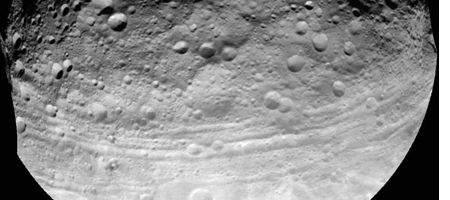Enormous troughs that encircle the asteroid Vesta may be faults that formed when another asteroid smacked into its south pole, and indicate that it has the same type of interior as a planet.

The origin of the troughs – one of which is bigger than the Grand Canyon – has long puzzled scientists, as they can’t be explained by simple collisions.
But new observations by NASA’s Dawn spacecraft last year indicate that a large collision could be the cause – but only if the asteroid is differentiated, meaning that it has a core, mantle and crust.
“By saying it’s differentiated, we’re basically saying Vesta was a little planet trying to happen,” says Debra Buczkowski of the Johns Hopkins University.
Previous research has found signs of igneous rock on Vesta, indicating that rock on Vesta’s surface was once molten, a sign of differentiation.
If the troughs derive from differentiation, then they’re graben – a dip in the surface that forms when two faults move apart from each other and the ground sinks into the widening gap. Death Valley in California is one example.
And the images from the Dawn mission show that Vesta’s troughs have many of the qualities of graben, such as floors that are flat or curved and have distinct walls on either side, like the letter U.
Vesta now appears to be unusually planet-like, in that its mantle is ductile and can stretch under a lot of pressure. “It can become almost silly putty-ish,” said Buczkowski. “You pull it and it deforms.”






